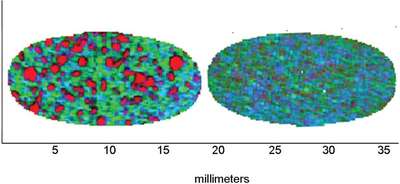You can determine an object’s physical features by simply looking at a picture with your naked eye. Its size, shape, and color are just three of the things you can usually describe as a thing using your naked eye. But what if you use a tool to examine a specific matter to classify it beyond the narrow features inside it? You can make that happen, especially in evolving technological capacity.
Scientists can now recognize and study a thing’s specifications, conditions, and consignment, depending on the ways they desire. The method of classifying the mentioned aspects of an object is called chemical imaging.
Are you interested in the chemical imaging system? Please keep reading to learn more.
What is Chemical Imaging?
Chemical imaging monitors a material’s physical and chemical properties in a dimensionally set-on way. In the exterior part, chemical imaging obtains data. Gathering information for every specified position, or pixel, in an x-y matrix and then converting that data into a two-dimensional visual or image.
Active ingredients can also be recognized and evaluated. An arrangement on the sample surface can be made transparent using this technique. Chemical imaging can assess the chemical agents’ authenticity, grade, volume, precursors, and additives in mass or granular pharmaceutical formulations, biological material, storage, and equipment.
Although the scientific methodology of chemical imaging is rapidly gaining traction, implementing a simple parameter method requires adjustments to the plot routines. The procedures use plots for graphically presenting their accomplishments. NIR, Raman spectroscopy, MIR, and IR are the four most common techniques utilized in chemical imaging.
Four Common Techniques of Chemical Imaging
In chemical imaging, the usages and purposes vary from where the scientists will direct the object. The NIR, Raman Spectroscopy, MIR, and IR are the four main techniques for using chemical imaging. To let out further elaboration, the following will discuss the four techniques utilized in chemical imaging:
1. Near-Infrared Chemical Imaging
The combined effect of image analysis and near-infrared spectroscopy is called “near-infrared chemical imaging,” or NIR-CI. Scientists can use NIR-CI to depict the geographic variation of the biochemical components found in a sample.
Examining the material provides the blossom of a hyperspectral image cube that encompasses multiple spectra. The information processing of the hyperspectral cube is an essential component of a NIR-CI study. As it integrates the quantitative selection of spectroscopic techniques with geospatial data, NIR-CI is an innovation that is growing beneficial for predictive maintenance.
Chemical imaging offers the opportunity to assess the uniform distribution of such crucial quality characteristics throughout the totality of the item. However, traditional near-infrared spectroscopy is an enticing way to determine the moisture content and undertake sturdy investigation and prosecution of the lyophilized component.

2. Mid-infrared (MIR) Spectroscopy
The unique characteristics were affected by liquid food, which exhibited distinct contributions to the evolution of living beings. As an outcome, mid-infrared (MIR) spectroscopy mixes several advantages, including high recognition sensitivity and non-intrusive operation. So, as an effect, it may function as a feasible alternative to more standard techniques for evaluating food quality for assessing food quality.
3. Raman Spectroscopy
Raman spectroscopy is a technique of non-corrosive chemical assessment which can yield specific information about the molecular structure, aspect, collaborative diversity, thermal properties, and biomolecules of a substance. It also depends upon the relationship of light with a covalent bond that is present inside a molecule.
An impact results from a form of refraction described as the principle of dispersion. Wherein a molecule is used to disperse the light. This impact, called Raman, is incidental by a high laser emitter. This occurrence, known as Rayleigh Scatter, demonstrates how most of the light emitted shares the same frequency or hue as the light beam. However, Rayleigh Scatter does not supply any crucial results.
4. Infrared Chemical Imaging
Analysis of organisms, structures, plastics, archaeological samples, and other objects has now seen extensive applications of Infrared imaging methods. However, the applications of infrared in various sectors are constrained as water has a significant concentration of attenuation in the Mid-IR since longer frequencies inherently lead to smaller pixel sizes.
However, in past generations, attempts were made to enhance the spatial resolution and cuts in the water setting. Therefore, applying microchannels associated with appropriate data analysis processing techniques allows for extracting important data while concurrently pulverizing the water context.
Chemical Imaging System for Holistic Innovation
As scientists in chemical imaging aim to examine things and make the results valuable for their efficient purposes, procurement was being made and developed for biochemical structures. With the help of chemical imaging, scientists can deeply discover what is behind the physical features of an important object.
Chemical imaging has been helping in large branches of science. The way scientists are passing it to the information-reliant generations has become living proof of establishing good effects on human beings. It proves the existence and efficacy of the system itself and the advantages it has been continuously giving in the world.
